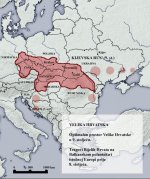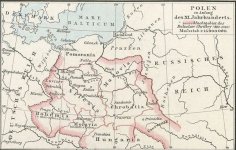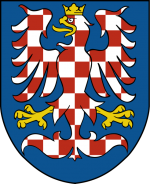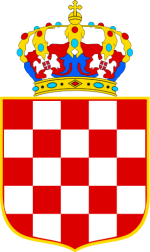I came across something interesting:
EU7
Croats 44,8%
Lapps (Saami): 41,7%
Germans: 37,5%
EU19
Hungarians 60%
Poles 56%
Ukrainians 54%
Croats: 29%
Germanic-Dinaric haplogroup (Eu7 or I) is the most frequent in West Balkans (to 73% in Dalmatia and Herzegovina), reaching across Germany northwards to Scandinavia (48 %) and eastwards to Caucasus (58 %), Kurdistan and Teheran (to 34%). It includes 4 similar regional subtypes. The Germanic-Dinaric haplogroup is divisible into the Germanic haplogroup (I1), which is most common in Scandinavia, and the Dinaric haplogroup (I2), which is most common in the West Balkans.
.....21 Horithi, Horiti, C.'— Horigti, L. A Slavonic race, placed by Alfred the Great to the east of the Slavi Dalamenti, who occupied the district north-east of Moravia...... See note 23. R. T. Hampson,. Notes and Qrs, No 17,. p. 258.— S. W. Singer says,— The Horiti of Alfred are undoubtedly the Croati, or Crowati of Pomerania, who still pronounce their name Horuati, the h supplying the place of ch. Nor does it seem unreasonable to presume that the Harudes of Csesar (De Bel. Gall. I, 31, 37, 51) were also Croats; for they must have been a numerous and widely spread race. They are also called Charudes, *ApovO€^, The following passage from the Annales Fuldenses, A. 852, will strengthen this supposition ; — '' Inde transiens per Angros, Harudos,. Suabos, et Hosingos • . .. Thuxdngiam ingreditur." Notes and Qrs, No 20, p. 314
This would mean that the Harudes (Χαροῦδες) were in all likelihood a Slavic-Gothic alliance, which would account for their large numbers and highly regarded standing and privileged position. This root name is the genesis of the emerging 'Hrvati' ethnonym and people down to this day. (As seen it also had a part to play in topography, names and place names elsewhere, even the very Carpathians mountains...[Horvatya/Harvathi/Harvaða in the later Gothic epics] This again would partly explain and emphasize the truth of the descriptions of Croats being called Goths as well as Slavs in later Roman and Byzantine accounts also.
From the Polish territories called Lingonia seven or eight tribal clans arrived under Totilo. When they saw that the Croatian land would be suitable for habitation because in it there were few Roman colonies, they sought and obtained for their duke...The people called Croats...Many call them Goths, and likewise Slavs, according to the particular name of those who arrived from Poland and Bohemia..... (Historia Salonitana)
According to the etymologist, E. Forstemann, the Gothic root "Hroth!" had various forms such as Hruad, Hruat, Hroad, Hruot, and Chrout. During the time of 10th century Croatian King Stephen Držislav there is a Royal Inscription which in Latin reads "Dux Hroator" - "Duke of the Croats".
Prof. V. Giuffrida Ruggeri at the Anthropological Institute in Naples also offered the claim that long ago the original Croats of Europe were not Slavs, but rather Goths/Germanic who were then Slavicized
"The Saga of Hervör and Heithrek (Translated by Nora Kershaw in 1921)....notice the names..".....By her he had twelve sons. The eldest was Angantyr, then Hervarth, thenHjörvarth, Sæming and Hrani, Brami, Barri, Reifnir, Tind and Bui.......... "This pike at the mouth of the river, Has paid the penalty, For the slaughter inflicted on Heithrek, "Neath the Mountains of Harvathi....."






